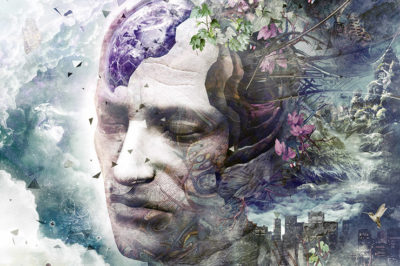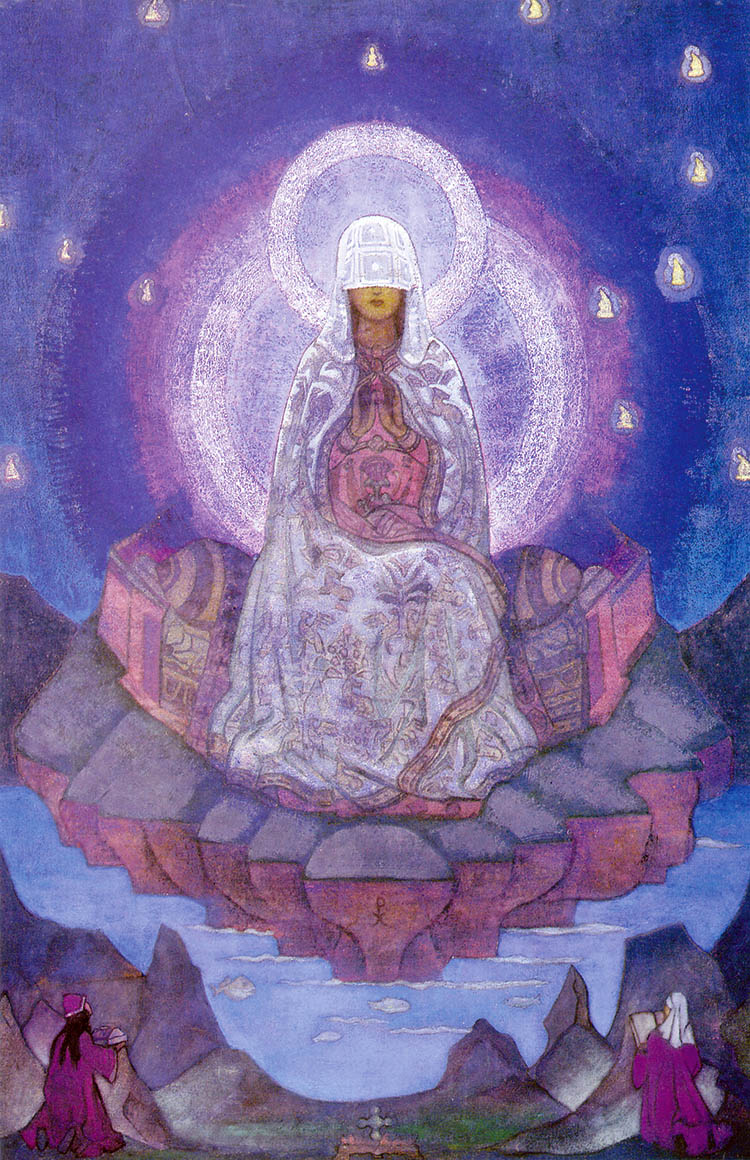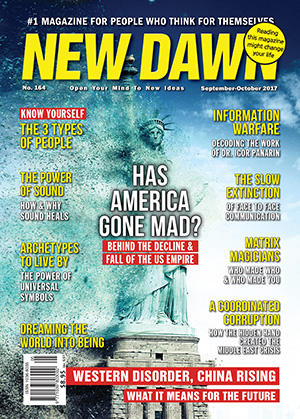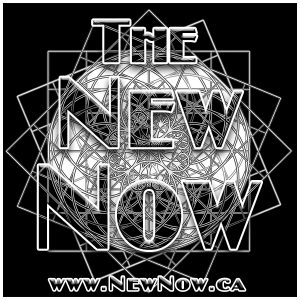Archetypes To Live By: The Power of Universal Symbols
From New Dawn 164 (Sept-Oct 2017)
A human life is a story, with a beginning, middle and an end. Like stories, our lives are filled with moments and experiences that shape us into who we ultimately become. Many of those moments and defining experiences become embedded within the subconscious mind, and even deeper into the ‘collective unconscious’ where they continue to drive our behaviours, actions and thoughts long after their shelf-life has worn out. They take on a symbolic form, and, in turn, a universal aspect that is understood, and experienced, by others all over the world regardless of time, place, colour, gender or creed.
These universal symbols are called ‘archetypes’, a word which has its roots in the ancient Greek archein for ‘original, old’, and typos for ‘pattern, type or model’. Archetypes are models or blueprints of original patterns, concepts, ideas, objects, themes and motifs that are later copied, modelled after, emulated and derived from. They serve as a foundation for understanding who we are not only as individuals, but as the collective of humanity as well.
Two of the biggest figures in the development and evolution of the study of archetypes were Swiss psychoanalyst Carl Gustav Jung, and comparative mythologist Joseph Campbell. Both have been instrumental in our understanding of archetypes, and their research served as the springboard for more recent examinations by noted authors and experts in the field of personal transformation.
Levels of the Mind
Before we delve into the world of archetypes, we need to understand the levels of the human mind and how they operate. The most obvious to us is the conscious mind, which basically is the present and aware mind we live with on a daily basis. It is awake, rational, analytical and observant, but also preoccupied, overwhelmed and distracted. It is both clear mind and monkey mind, and the level of mind we use to interact with others and our physical environment.
Just below the level of the conscious mind lies the mighty world of the subconscious, where the vast majority of our behaviours, thoughts, actions and personalities emerge from. Like the base of an iceberg, the tip being the conscious mind, the subconscious is the ‘driver’ of the vehicle and is a place of shadows and darkness, buried experiences and embedded patterns, old beliefs and fears and all sorts of programming that has built up over the years, often at the hands of external influences like parents, peers, teachers, religious and political figures and cultural beliefs.
Where the conscious mind makes plans, the subconscious mind often derails those plans because of old patterns we don’t even know are there. So, it makes sense that most of who we believe ourselves to be is not even who we really are. Rather, it is the product of the vast expanses of the subconscious. And it is very hard to find the programming within, let alone change it!
Deeper still is a realm of mind that connects us to everyone else, and to all of humanity. It is below the personal subconscious, and filled with images and symbols as its means of expression. Dreams, visions, patterns, and yes, archetypes, live here in the collective unconscious, which may be described as the universal grid we are all locked into, yet often completely unaware of.
Carl Jung believed that it was here, at this deepest layer of reality, of mind, that most of what made us ‘us’ existed. The collective unconscious is not a place where language and words are spoken, but where images and symbols reign. These symbols are universal to humanity, and links us to those who have lived in the past, and to those who live thousands of miles away, in cultures and societies far different than our own. On this level, we all ‘get’ each other.
Archetypes
Born in 1875, Carl Gustav Jung was a Swiss-German with a fascination for the fields of psychiatry and psychotherapy. He began his illustrious career as a student of Sigmund Freud until differences of ideologies, basically those of Freud involving infantile sexuality and the Oedipus Complex, drove Jung to strike out on his own. Jung believed that the world’s myths, origin stories and even religious stories contained universalities that were shared by all, even amongst cultures that had no interaction with one another. How could this be? Jung noted the symbols common to all were archetypes, stored away in the collective unconscious, but always popping up into our human experiences and interactions in very visible and identifiable ways.
From this “common psychic substrate,” as Jung called it, which is present in each and every one of us, comes the very source materials from which we become ‘human’ in a way we can all identify with. He wrote extensively about this in his seminal books, notably The Archetypes and the Collective Unconscious, which suggested archetypal symbols are not learned but inborn. These patterns were inherited by each generation by both genetic and non-genetic means. They became a part of the DNA of humanity, so to speak.
The Jungian archetypes became the structures by which psychology, psychotherapy and even recovery therapy and counselling looked at the deepest root causes of personal patterns, dream motifs and long-held problems the conscious mind could not overcome or change. These symbols also infiltrate every aspect of creativity, entertainment and today’s pop culture in the characters and themes we most flock to in novels, movies and television shows.
The main Jungian archetypes are:
PERSONA: The mask we wear to others, and often ourselves. This is our public role and the way we wish to be perceived out in the world. It is NOT the true person we are.
SELF: The authentic self, which can only be achieved once we have unified the SHADOW side and the ANIMA/ANIMUS. The whole SELF. This is what we should have as the ultimate goal – the real person we want to, and were meant to, be.
SHADOW: The ‘dark’ aspects of SELF we often deny exist or tuck away into the depths of the subconscious. This is our primal, sexual, animal side. It is both creative and destructive, and often contains all that we have repressed.
ANIMA/ANIMUS: The mirror images of gender within. The ANIMA is the female aspect, and the ANIMUS is the male aspect. Females have a repressed ANIMUS they must acknowledge. Males have a repressed ANIMA.
GREAT MOTHER: The nurturer and creative force, which begins as the archetypal MAIDEN, then becomes the caretaker and MOTHER of the world, and then becomes the wise old CRONE.
HERO: The aspect that takes on challenges, exhibits bravery and courage, and partakes of the journey of life, obstacles and all, with all the growth, trials and transformations that it entails.
CHILD: The innocent one who sees life as pure. The child within.
WISE OLD MAN/WOMAN: The wise part of Self that knows all, sees all. Also known as SAGE, PRIEST, PRIESTESS, MENTOR, and even KING or QUEEN. Both kind and understanding, and cantankerous and snarky, just like our favourite grandparents.
Other archetypes include everything from MARTYR, VICTIM, WARRIOR, SURVIVOR, PRINCE, PRINCESS, GODDESS, GOD, JESTER, FOOL, ARTIST, ANTI-HERO, BEAST, HEALER, GENIUS, STORYTELLER, LEADER, FOLLOWER and even DEMON. While Jung was focused upon the main archetypes associated with his field of study, we can easily see how modern humans exhibit a number of archetypes he did not include, and how those evolve along with humanity as a whole.
For example, today we might call a ‘GEEK’ an archetype that is associated with the rise of technology all over the world. A boy in Japan and an old woman in Norway will both understand the symbol of someone immersed in gadgets and computer gear. Today, we might recognise a DIVA on a global scale, but thousands of years ago, she might have been called a GODDESS. We evolve, and therefore the inherent archetypes that describe our experiences do too.
Archetypes can even be applied to life events that are universal, such as birthdays, marriage, first menses, menopause, death, funeral rites, baptisms, and coming of age rituals. Jung referred to them as “situational archetypes.” These events happen in most of the world’s cultures, with only the specifics that are changed. Interestingly, life itself is an archetype…
The Hero’s Journey
Joseph Campbell’s “Hero’s Journey” is an archetypal motif for the human experience, itself filled with archetypes, and one of the most identifiable explanations of the universality of the most popular stories, whether they are old or new. Campbell was a noted mythologist, writer and lecturer who literally put comparative religion and mythology into the hands of the layperson by making such complex subjects both simple and understandable in his many books, including The Power of Myth, and lecture series for PBS. His “Hero’s Journey” motif was the basis for the most popular movie franchise in history, Star Wars, as George Lucas, the creator of the science fiction adventure series, was a huge fan of Campbell and met with him while structuring his storylines.
One only needs to watch how the story of a young lad named Luke Skywalker unfolds to see this archetype at work and be able to identify with aspects of it. Luke begins as an innocent and ordinary young man, working for his aunt and uncle, when he is called to adventure upon their tragic deaths. He is afraid at first, but takes on that call and soon meets with allies in the form of two droids, who help him along in his journey. He also has wise older mentors to teach him the ways of the Jedi. He crosses the threshold from his normal life into one of galactic adventure, where he runs into the enemy in the form of a dark-cloaked individual who he must do battle with, but first he enters the dark cave of truth where he comes face to face with his innermost fears. He comes out to face the supreme ordeal, hitting bottom. The abyss calls out to him. But Luke seizes the sword and gets a reward for it, which drives him on to the journey home as a newly resurrected hero. Then, BOOM, before he makes it home, the biggest battle of all confronts him and he overcomes it, with his newfound courage, strength and wisdom. Then, finally, he heads back home with a treasure in hand, truly transformed,and is celebrated as a hero.
The most endearing, and enduring, forms of entertainment contain this journey in some form. The genre might change from science fiction to western, but the bold elements are there in all their archetypal glory, and we respond accordingly.
But understanding archetypes intellectually doesn’t help much when we are struggling to fully express ourselves and actualise the authenticity we feel within.
Working With Archetypes
So we understand what archetypes are. Big deal. Unless we can find a way to apply this knowledge to bettering our lives, it really doesn’t matter much. If a concept isn’t useful, we tend to toss it aside. However, when it comes to archetypes, we truly do have the ability to literally rewrite the stories of our lives if we know how.
First we have to dig up the archetypes that operate us and put them under the microscope. Are they serving us? Are they sabotaging us? Did we even choose these archetypes in the first place, or were they chosen for us by other people with other agendas?
It all begins with an honest appraisal of who we are, what our ‘story’ is, and how we see ourselves in the eyes of others. For some people, writing out the beats/defining moments of their own personal history can reveal telling patterns that may not be obvious on the surface. Meditating on our lives can do the same by shedding light where all was concealed in shadow. Then, sitting down and reviewing our story becomes more honest and truthful, much in the same way someone in recovery undertakes a ‘fearless moral inventory’ as part of the 12-step work.
This takes time and effort, but will show us exactly where patterns that still govern our actions and behaviours originated, and who planted them there. Only then can we ask if those patterns are chosen by us, and if they are helping us achieve authenticity and fulfilment of the SELF… or keeping us under the power and control of the PERSONA – the mask we wear for the world.
One powerful way to see exactly what archetypes are active in our lives is to notice what we complain about the most.
“I am so tired of doing everything for everybody. Who helps me?”
“Why do I have to always repeat myself? I feel like no one even listens to me or sees me?”
“I am sick of being a doormat for others to take advantage of.”
Any of those sound familiar? If so, think of yourself as a VICTIM or MARTYR.
How about:
“I always have to be strong.”
“I am tired of saving everyone.”
“I have to lead every situation because no one else steps up to the plate.”
You, my friend, have a WARRIOR imbalance.
And that is key, because some of the archetypes within are positive, some are negative, and some are just in need of a little balance. We all want to be warriors, but as shown above, when that archetype is too strong and active, we may need to temper it with a little VICTIM in order to not feel taken for granted, burnt out or overwhelmed saving the world. Even WARRIORS need to be taken care of now and then.
We have all heard it said that it takes approximately 21 days to change a habit. When it comes to changing a negative archetype and replacing it with a more empowering one, we have to repeat ourselves and act as if. Say, for example, we want to replace the inner FOOL with a SAGE. We must pretend at first that we are wise and act from that belief until it becomes habitual and embedded within the subconscious, and then the collective unconscious. We may still behave as the FOOL now and then, but course correction is a part of archetypal work and it won’t happen overnight. Knowing that, we can move forward to creating a new ‘vision’ of who we are that is more aligned with our authentic SELF, and not the PERSONA we have been wearing just to survive.
Guided visualisation can assist us in meeting with the aspects of ourselves we need to change or eliminate, and also to further empower the archetypes we like and that work for our greater good.
Watch Your Language
Those who follow the teachings of the laws of attraction can attest to the power of words to define us. When we want to change our lives, and the symbols that we operate by, we must watch what we say as well as what we do. The words we choose to describe ourselves are telling.
“I am a survivor.”
“I am a loser.”
“I am an addict.”
“I am _________” Fill in the blank.
What we say about ourselves is what we believe and what we manifest. Yet is it accurate, or again, imposed upon us from our childhoods by those who decided to label and categorise us as they saw fit?
In the recovery movement, standing up and saying “I am an alcoholic” or “I am an addict” is a powerful part of admitting the truth and getting out of denial. But are these labels ultimately keeping us stuck and associated with the very aspects we wish to change? Can we rephrase these to be more powerful and assist in our recovery? “I am a sober person.” “I am thriving without drugs.”
Even those who are cancer survivors are recognising the amazing power that choosing words can have on their ability to stay positive and possibly assist in healing. “I am a cancer survivor” is being replaced with “I am a thriver,” and the difference in the energy is palpable.
Act Local, Think Global
The great thing about working with archetypes is that we not only become more actualised and authentic individuals, but we contribute to the collective. We can change the archetypes that are at play on a global scale from negative to positive if we do the hard individual work first. Imagine a world that is more PEACEMAKER and less WARMONGER. Can we envision and work towards a planet of NURTURERS and CREATORS, neutralising the overwhelming power of the DESTROYERS and USERS? This world can certainly use more ARTISTS and LOVERS and VISIONARIES. But first we must become those things on a personal level.
Archetypes are working all the time in each of us, whether we stop to notice at all. By taking a look at where we are now, and whether or not we are living as we desire, we can get a good gauge on how much deep work is needed to take off the masks of the PERSONA and step into a more actualised SELF. Symbols and images are somewhat useless unless we can find a way to use them for growth and transformation.
If indeed a human life is a story, then each human has the ability to revise, rework and rewrite that story to better reflect the truth of who he or she is. That is the power of archetypes. They shape the subconscious and form the substrate of the collective unconscious. Without change on those levels, we cannot change on the conscious level.
We must dive deep to the base of the iceberg and the dark murky ground upon which the base stands to really understand why we act, think and behave the way we do… and how we can once and for all tell the world the stories of our lives the way they were meant to be written.
For more on this subject, obtain a copy of Marie D. Jones’ book The Power of Archetypes: How to Use Universal Symbols to Understand Your Behavior and Reprogram Your Subconscious (New Page Books, 2017).
© New Dawn Magazine and the respective author.
For our reproduction notice, click here.
© NEW GNOSIS COMMUNICATIONS INT. PTY LTD
– Come Like Us on Facebook – Check us out on Instagram –
– Sign Up for our Newsletter –



 www.newdawnmagazine.com
www.newdawnmagazine.com










